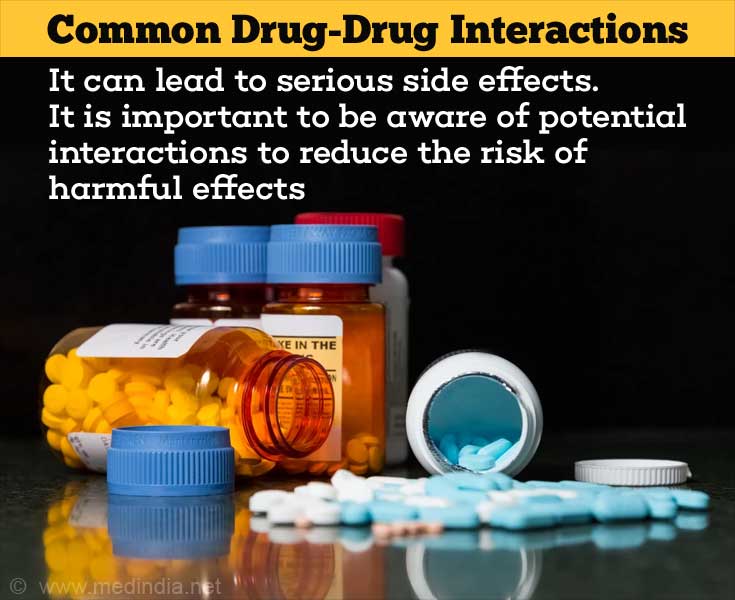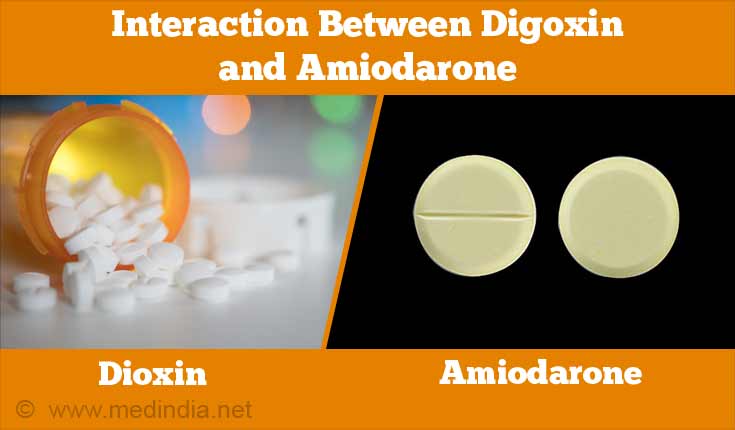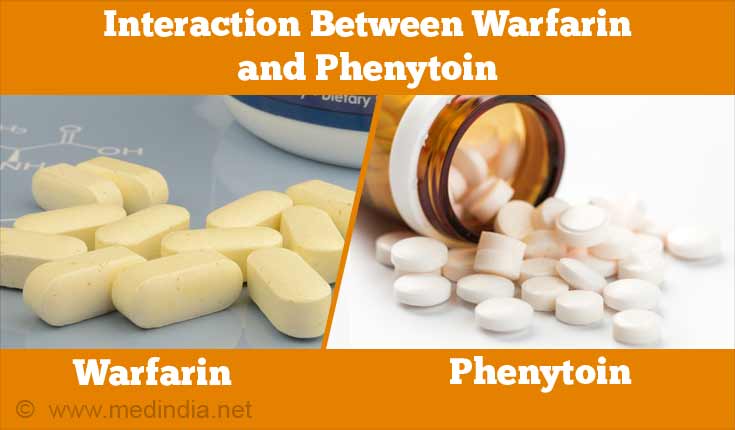- Ansari JA. Drug Interaction and Pharmacist. J Young Pharm. 2010 Jul-Sep; 2(3): 326–331 - (doi: 10.4103/0975-1483.66807)
- Avoiding Drug Interactions - (http://www.fda.gov/ForConsumers/ConsumerUpdates/ucm096386.htm)
- Top 10 Particularly Dangerous Drug Interactions in PA/LTC - (http://www.paltc.org/top-10-particularly-dangerous-drug-interactions-paltc)
- Drug Interactions: What You Should Know - (http://www.fda.gov/downloads/drugs/resourcesforyou/ucm163355.pdf)
- Ament PW, Bertolino JG, Liszewski JL. Clinically Significant Drug Interactions. Am Fam Physician. 2000 Mar 15;61(6):1745-1754 - (http://www.fda.gov/downloads/drugs/resourcesforyou/ucm163355.pdf)
- Messiha FS. Fluoxetine: adverse effects and drug-drug interactions. J Toxicol Clin Toxicol. 1993;31(4):603-30 - (http://www.fda.gov/downloads/drugs/resourcesforyou/ucm163355.pdf)
- Mesgarpour B, Gouya G, Herkner H, Reichardt B, Wolzt M. A population-based analysis of the risk of drug interaction between clarithromycin and statins for hospitalisation or death. Lipids Health Dis. 2015; 14: 131. - (http://www.fda.gov/downloads/drugs/resourcesforyou/ucm163355.pdf)
What is Drug-Drug Interaction?
Drug-drug interactions occur when two or more drugs alter each other’s effects or increase the chances of side effects. The drugs may be taken for the same disease or two different diseases present at the same time.
Drug-drug interactions are not limited to only prescription medications; these can occur with non-prescription or over-the-counter drugs as well.

The drug-drug interactions may not occur in all the individuals who take the combination of the medications. The development of the interaction depends on several conditions like the age or underlying disease conditions of the patient like liver or kidney disease (which interfere with the metabolism or excretion of the drug), or the dose or duration of the medications, or the time difference between the administration of the medications.
A drug-drug interaction may make one of the drugs less effective, cause unexpected side effects or increase the action of the other drug. While several drug-drug interactions are harmful, there are cases where two drugs are given together because of a beneficial effect as well.
Which are Some Common Drug-Drug interactions?
Some of the common and well-known drug-drug interactions are listed below:
1. Angiotensin Converting Enzymes (ACE) inhibitors and Potassium Supplements
- ACE inhibitors: ACE inhibitors are used to control blood pressure, and treat heart failure and early kidney disease. Examples include benazepril, lisinopril and enalapril
- Potassium Supplements: Potassium supplements are used to increase potassium levels in the blood. Examples include potassium citrate, potassium bicarbonate and potassium chloride
- Interaction: ACE inhibitors increase the levels of potassium in the body. Thus, if potassium supplements are co-administered with ACE inhibitors, there is a potential for elevated potassium levels in blood (known as hyperkalemia)
- Monitoring:
- The combination should be avoided as far as possible. If it cannot be avoided:
- Serum electrolyte levels must be measured through repeated blood tests to keep a check on potassium level
- Symptoms of hyperkalemia such as weakness, confusion, numbness or uneven heartbeats must be looked out for
2. Angiotensin Converting Enzymes (ACE) inhibitors and Spironolactone
- ACE inhibitors: ACE inhibitors are used to control blood pressure, and treat heart failure and early kidney disease. Examples include benazepril, lisinopril and enalapril
- Spironolactone: is used as a diuretic to remove excess fluid from the body caused by various diseases
- Interaction: Spironolactone increases blood potassium levels, which is additive to the blood potassium-increasing effect of ACE inhibitors. Thus, a very high level of potassium called hyperkalemia may occur
- Monitoring:
- The combination should be avoided as far as possible. If it cannot be avoided:
- Serum electrolyte levels must be measured through repeated blood tests to keep a check on potassium level
- Symptoms of hyperkalemia such as weakness, confusion, numbness or uneven heartbeats must be looked out for
3. Digoxin and Amiodarone
- Digoxin: is used to treat congestive heart failure, and to slow the heart rate when there is disturbance in cardiac (heart) rhythm
- Amiodarone: is used to treat serious cardiac arrhythmias
- Interaction: Amiodarone may lead to increased levels of digoxin in the body and potential toxicity.
- Monitoring:
- Monitor the heart rate and electrocardiogram (ECG) when the two medications are taken together
- Observe for symptoms of digoxin toxicity like abdominal pain, loss of appetite, blurred vision, hallucinations, depression and slow heart rate

4. Digoxin and Verapamil
- Digoxin: It is used to treat congestive heart failure, and to slow the heart rate when there is disturbance in cardiac rhythm
- Verapamil: is used to treat high blood pressure. It slows down the heart
- Interaction: Verapamil may decrease the clearance of digoxin, leading to increased levels of digoxin in the body and potential toxicity. Intake of digoxin and verapamil together may result in excessive slowing down of the heart
- Monitoring:
- Monitor heart rate and ECG of the patient
- Observe for symptoms of digoxin toxicity like abdominal pain, loss of appetite, blurred vision, hallucinations, depression and slow pulse
5. Theophylline and Quinolones
- Theophylline: is used to provide relief to asthmatic and other respiratory disease patients. It is used less commonly nowadays due to the availability of better medications
- Quinolones: Quinolones are antibiotics used to treat urinary tract infections (UTIs) as well as other infections. Examples include ciprofloxacin, ofloxacin, norfloxacin, and sparfloxacin
- Interaction: Quinolones inhibit the metabolism of theophylline, thereby increasing its blood levels and leading to potential theophylline toxicity and increased likelihood of seizures
- Monitoring:
- The blood levels of theophylline must be monitored
- One must be on guard for the appearance of seizures and other side effects of theophylline
6. Warfarin and Macrolides
- Warfarin: It is used as an oral anticoagulant to prevent blood clot formation
- Macrolides: They are antibiotics used to treat common bacterial infections. Examples include azithromycin, clarithromycin and erythromycin
- Interaction: Macrolides reduce the metabolism and clearance of warfarin, resulting in increased levels and effects of warfarin like bleeding
- Monitoring:
- A blood test called the International Normalized Ratio (INR) which measures the effect of warfarin should be monitored frequently
- Symptoms of active bleeding, in the form of bleeding from gums, nose bleeds, tea colored urine, black stools and coughing of blood must be watched for

7. Warfarin and Nonsteroidal Anti-Inflammatory Drugs (NSAIDs)
- Warfarin: It is used as an oral anticoagulant to prevent blood clot formation
- NSAIDs: They are used to treat inflammation, fever, headache and arthritis. Examples include diclofenac, aspirin, ibuprofen, naproxen and ketoprofen. They interfere with blood clotting and can cause stomach ulcers.
- Interaction: NSAIDs interact with warfarin and can result in serious gastrointestinal bleeding
- Monitoring:
- The INR should be monitored frequently when the drugs are given together
- Symptoms of active bleeding, in the form of bleeding from gums, nose bleeds, tea colored urine, black stools and coughing of blood must be watched for
8. Warfarin and Phenytoin
- Warfarin: It is used as an oral anticoagulant to prevent blood clot formation
- Phenytoin: is used as anti-convulsant, to treat seizures
- Interaction: Phenytoin can lead to increased effects of warfarin while warfarin can increase the blood levels of phenytoin
- Monitoring:
- The INR and phenytoin levels should be monitored frequently when the two medications are taken together
- Symptoms of active bleed, in the form of bleeding from gums, nose bleeds, tea colored urine, black stools and coughing blood must be watched for
- Symptoms of phenytoin toxicity like drowsiness, abnormal gait and confusion should be watched for

9. Warfarin and Quinolones
- Warfarin: It is used as an oral anticoagulant to prevent blood clot formation
- Quinolones: They are used to treat urinary tract and other infections. Examples include ciprofloxacin, nalidixic acid and norfloxacin
- Interaction: Quinolones interact with warfarin resulting in decreased metabolism and clearance of warfarin. In addition, antibiotics kill bacteria in the digestive tract that produce vitamin K, thereby increasing the effect of warfarin. This increases the effects of warfarin, with potential to excessive bleeding
- Monitoring:
- Quinolone antibiotics should be avoided in patients taking warfarin, in whom other antibiotics should be preferred
- INR should be monitored during co-administration with quinolones
- Symptoms of active bleed, in the form of bleeding from gums, nose bleeds, tea colored urine, black stools and coughing blood should be watched for
10. Warfarin and Sulfa Drugs
- Warfarin: It is used as an oral anticoagulant to prevent blood clot formation
- Sulfa antibiotics: Sulfa antibiotics are used to treat bacterial infections. Examples include sulfamethoxazole and sulfisoxazole
- Interaction: Sulfa drugs interact with warfarin increasing the effects of warfarin
- Monitoring:
- Sulfa antibiotics should be avoided in a patient taking warfarin
- The INR should be monitored during co-administration of warfarin with a sulfa drug
- Symptoms of active bleeding, in the form of gum bleeding, nose bleeds, tea colored urine, black stools and coughing blood must be watched for
How can Drug-Drug Interactions be Prevented?
- Inform your healthcare provider about the various medicines including health supplements and food supplements that you are already taking or would have taken in the last few weeks

- Always read the patient information leaflet provided along with the drug
- Report any change in lifestyle to healthcare provider, for example, change in diet and exercise regimen
- As far as possible, one pharmacy must be used for all prescription and over-the-counter products. This would be beneficial as the pharmacist may record all your drugs and can advise on drug-drug interactions and side effects
- If you suspect that an adverse effect is caused by a drug-drug interaction, record the day and time when various medications are consumed
- The healthcare provider must be alert to the possibility of drug-drug interactions and take appropriate precautions like using alternate medications, adjusting doses and monitoring patients, to manage and prevent multi-drug interactions
Health Tips to Avoid Drug-Drug Interactions
- It is important for the patient to read the prescription information, warning labels and any such instruction accompanying the medicine pack, to understand the potential interactions between the medication and other medications and substances including alcohol.
- One must maintain a record of symptoms observed during routine consumption of medication, as well as when consuming combination of drugs.








